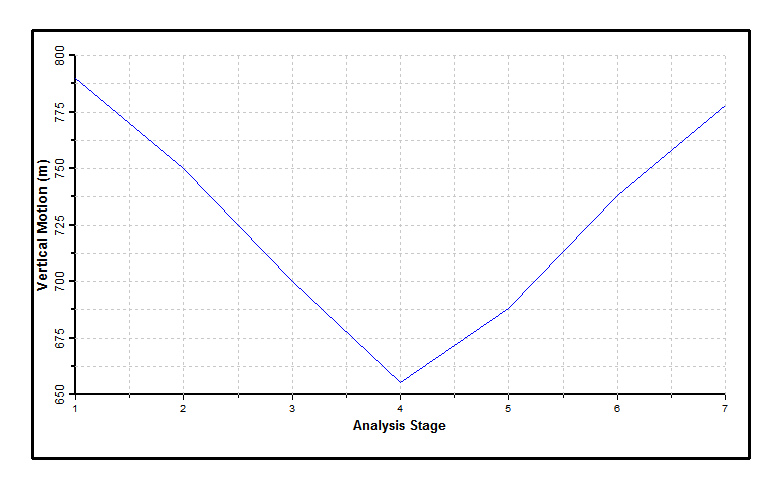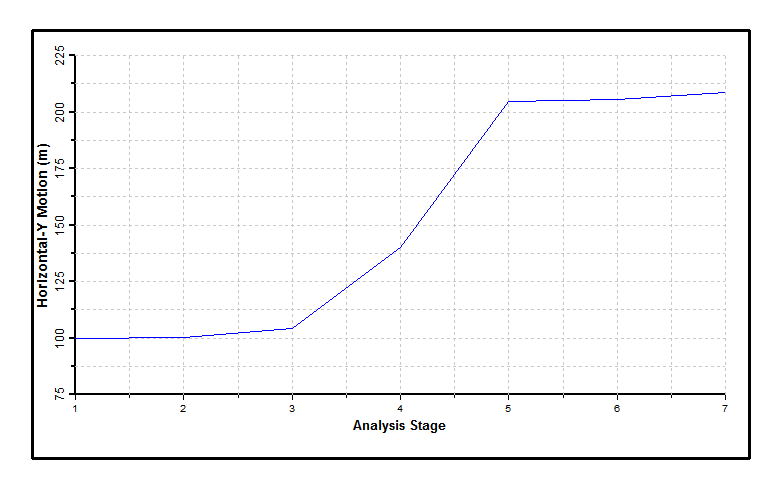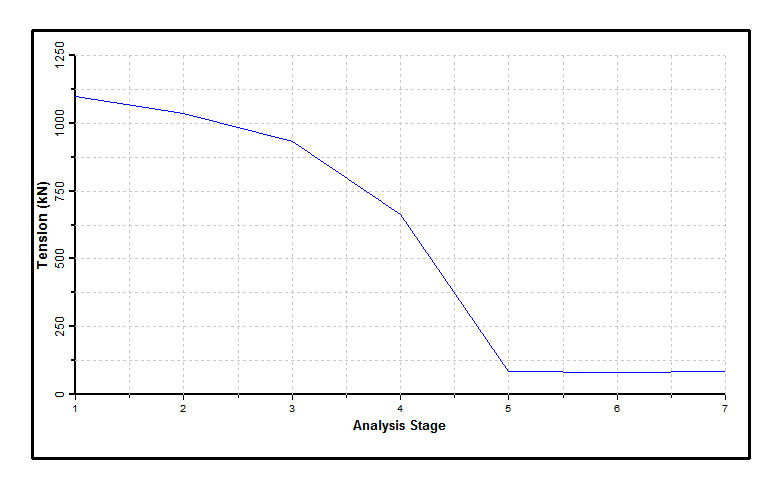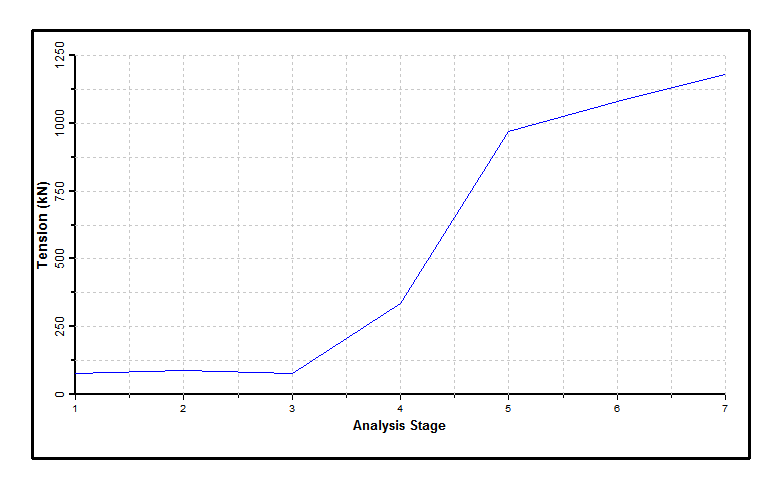Once the analysis has been successfully run, various reports and results may be viewed by going to the Results tab of the Analysis component and selecting the relevant buttons (Note: The stage of interest must be selected in the Stage drop-down list in order to get the results appropriate to that particular stage).
PipeLay also generates plots for the various parameters requested on the Summary Postprocessing tab. These plots illustrate the change in a particular parameter from one stage to the next. In the case of this example, all of the summary postprocessing plots are reproduced in the first four figures. Structure snapshots for each of the nine stages are also reproduced in the last figure.
The first figure shows the vertical elevation of the top of the SCR as a function of stage number. The top of the SCR drops over the first four stages, as the length of the winch cable joining the SCR to the installation vessel is increased. It then rises upwards again over the last three stages as length of the TLP cable is reduced.
The second figure presents the horizontal position of the top of the SCR as a function of stage number. As the SCR is lowered vertically over the first three stages the horizontal position remains roughly the same. Then as the weight of the SCR is transferred from the installation vessel to the TLP, the top of the SCR moves towards the TLP. Once the weight has been completed transferred the SCR begins to rise vertically again and so the change in horizontal position is more gradual over the last two stages.
The third figure plots the tension in the cable at the installation vessel as a function of stage number. The tension decreases over the first five stages as the weight of the SCR is transferred to the TLP cable. From stage five onwards the cable is completely slack and the tension (arising from the self-weight of the cable) remains roughly constant.
The fourth figure plots the tension in the TLP cable as a function of stage number. The cable is slack for the first three stages and so the tension remains roughly constant. Then as the weight of the SCR is transferred (i.e. in stages three to five) the tension increases rapidly. By stage five the cable is carrying the entire weight of the SCR and so the tension increases more gradually over the last two stages.

Vertical Elevation of the Top of the SCR

Horizontal Position of the Top of the SCR

Tension in Winch Cable from Installation Vessel

Tension in Winch Cable from TLP

Structure Snapshots